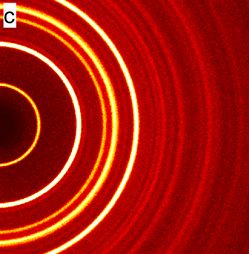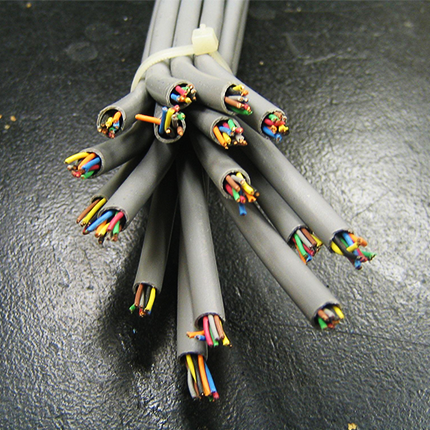I thought I would knock some dust off my drafting skills after a small chat with @captain_aggravated@sh.itjust.works
Seeing this image on the tutorial made me realize, FreeCAD seems to be a Technical Geometry Super-Suite. It makes sense that CAD would grow to include all of these things. But I thought sharing the initial perspective of some one who hasn’t looked at this stuff in about 18 years might be interesting.
Granted I’m not actually familiar with most of this stuff, and none of it from the POV of FreeCAD. If this can deliver 10% of what I’m looking at, I’m in for a treat.
Seems like a good opportunity to ask if anyone can recommend learning materials for FreeCAD? Used Solidworks and AutoCAD in school but fell back on tinkercad for a recent project just cause I didn’t have time to invest in learning.
This is a pretty good tutorial to get started in FreeCAD. Just watch out for the topological naming issue. They still haven’t fixed it, but if you know how to avoid it, you shouldn’t have too much trouble.
Parametric is such a leap, when coming from toy blocks like TinkerCad in which I can really easily do all that I want except those sexy fillets…
I really want to learn it but it feels so convoluted and difficult. I’m aware that FreeCAD is not the easiest, and some commercial packages are easier to grok but their licensing is really hostile to simple hobbyists so I am trying to to take the high road, for now anyway.
If you don’t want to make parametric models, you can build simpler things by combining primitive shapes in the FreeCAD part workbench. You can even fillet and chamfer them.
The dirty secret of FreeCAD is that most drawings that look okay will extrude even if unconstrained. You just lose the ability to leverage the history tree and the model will be as brittle as any direct modeler’s.
FreeCAD is on its way, it’s attracting a little more money and attention, and I’m using it more and more, but I often still feel like I’m fighting it.
Mind. Blown. I had honestly not thought of that possibility. And you say fillets work? Wow, have to try that. Thanks!
That is an insane bug to have in your CAD software, I don’t see how it’s usable for any slightly complex part.
Literally every CAD program suffers this to a greater or lesser degree. There are workarounds but they’re clunky.
The issue with FreeCAD is that all the workarounds (so far) are manual. Other apps may well be doing similar things, but they’re doing them behind the scenes and the user doesn’t have to (for instance) specifically set up a datum plane offset at the exact same distance as the face you want to sketch on and either manage it by hand or use an integrated spreadsheet to set up and reference variables.
I like what I see coming out of FreeCAD these days, but stuff like that is… umm, a lot.
Here is an alternative Piped link(s):
This is a pretty good tutorial to get started in FreeCAD
Piped is a privacy-respecting open-source alternative frontend to YouTube.
I’m open-source; check me out at GitHub.
deleted by creator
I find that Onshape is quite good and is all browser based so it runs quite well on linux.
From my perspective the biggest thing wrong with FreeCAD is that it’s a single threaded app in a multicore world. If you load large stuff, the app freezes and one core is working really hard for a while.
Solidworks is the same way.
Can’t say I’m surprised.
No, it’s the topological naming problem. End of.
That doesn’t have me wait for tens of minutes while one core slogs it’s guts out and the other fifteen sit there idle.
Isn’t like every CAD program single core? People got scammed hard with Xeon in the past. CAD PC salesmen had/have absolutely no idea what they were talking about
Biggest speedup has been the GPU integration. The single core stuff doesn’t seem to matter much anymore.
Mastercam does pretty well once you force it to use hardware accelleration
I often read that the UI is pretty unintuitive compared to the commercial competitors. I anyhow started with FreeCAD three years ago and never looked back. I design a lot of functional 3D prints with it and managed to solve all the issues I’ve faced so far. As I started with FreeCAD and never tried the alternatives, I also don’t miss the possibly more intuitive UIs 😁
I tried qcad around 2010 or so and found the UI horrible compared to autocad that I was used to. At this point in my life, drafting was pretty useless. So I had no reason to have cad unless it was free.
I found OpenScad in Y2020 and was amazed at how far it had come. It felt much more like the commercial stuff, at least to me, who was behind the times anyway.
QCad still sucks compared to AutoCAD, but it is only around $50 for a license where AutoCAD is pretty much subscription only at this point I believe.
We actually use it at work, because our 2d drafting use cases are very limited, but we still need something DWG compatible.
FreeCAD is fairly good. Some of the controls are a bit wonky, but that is just a minor gripe. If you are starting on FreeCAD, that doesn’t matter so much. FreeCAD is good to know if you design components for KiCAD as well.
Parametric modeling is fucking awesome, btw. I am not quite sure how old that concept is though.
Pretty old, I’d say 30 years. It’s what made pro/e, one of the first 3d cad systems, so famous within Boeing.
At least a decade, probably more
Even Freecad is well over a decade old. Opencascade is over 20.
I’ve been only doing cad for about 10 years so my knowledge is somewhat limited. I was talking about parametrics specifically. I should have made that clear
I don’t mean to poo poo FreeCAD the way I say this, but the vast majority of those features listed are bog-standard cad suite features at least by modern standards.
I’d love to see a FOSS cad suite kill my personal dependency on proprietary solutions, but as best I’m aware the UX is still hugely lacking.
Do they have editable history yet? That’s a big blocker for me jumping.
I was disappointed not to see one. That’s not a ‘no’, but I did look for one.
There’s basically a tree of operations that have been applied to a model. At any point, you can go back and edit what you’ve done at a previous step. For example, if you padded a feature out 10 mm, then added more stuff onto that feature, you could still go back and change that padding operation to 15 mm.
I’m still super new to freecad, and I haven’t done anything too complex in it yet, but my understanding is that some types of those changes can result in the topological naming problem. The way I understand it, when you make a shape, the software numbers all of the segments, vertices, and faces. If later changes are applied to those numbered faces, etc, and you go back and redo the operation that made those faces, etc, in a different order, the numbering will be different, and it will break your model.
There is a fork of freecad that fixes that whole issue, but the fix hasn’t been implemented yet in the main fork cause it’s pretty foundational to the working of freecad, so there’s a lot of things that can break
If you just attach every object to the global coordinate system instead of each other that bug can’t happen. Could be less convenient for larger projects though
My architect so poked at it for a bit and quickly gave up.
That part at least isn’t suited to its target audience apparently.
Needs a better logo as well
Actually that’s a great place for some “I want to help but I don’t know computers” people to jump in.
Yep, there’s a ton of great Foss projects that have a shitty logo. Look at Octave, looks like something 10yo me made in MS paint in 5 min
Can it export STL/3MF without making all the circles low poly yet?
Last time I tried it freecad was not usable for 3d printing because it doesn’t export properly.
With the naming bug that still exists too I found it basically unusable even for basic parts. It feels like going back 20 years compared to fusion 360.
I’ve used it for making models for 3D printing for about 5 years, never seen that issue
Strange, when I looked it up at the time there were a bunch of suggestions for defaults to change and stuff to try and solve it.
You can print circles and not have them come out with flat faces instead of an actual circle?
So I guess it’s only an arc and not a full circle, but I had no problem making this curved sanding block in FreeCAD.

deleted by creator
Have you tried using the mesh workbench rather than just exporting as STL?
Yes. I just did a few days ago actually. Made some 4 mm diameter washers, they look perfectly round.
STL is a total abnormally and a piece of shit of a format that doesn’t actually represent 3D objects very well and has a ton of issues when it comes to sharing. Unfortunately we’re stuck with this shit format and Autodesk with their Tinkercad seems to want to keep pushing it because as long as we use this crappy format we’re forced into sharing and collaborating inside their platform - that at some point might require a subscription.
Completely agree about STL, however, I cannot for the life of me understand why 3MF isn’t a binary format.
It has all these big tech companies behind it, and they landed on incredibly short sighted mistake of making the format human readable, instead of providing good tools for reading and modifying the binary format.
Compressing the human readable content is fine for reducing storage size. But de/serializing the XML is going to be at least 3 orders of magnitude slower. Given a sufficiently large file, the difference would be waiting 30 seconds, vs a barely noticeable 0.3 seconds.
What isn’t variant of XML these days? I know, it’s bad but it’s what it is.
XML isn’t as common as one would think. It’s been steadily decreasing in popularity and use. It’s a very verbose format that is suited to enrich a larger set of data, such as HTML documents. For data heavy documents where, it’s a particularly bad match, as you end up using as much text for annotation as the data itself.
Using XML for 3MF is IMHO a technical cop-out, where you don’t really want to solve it “correctly”, so you go with something that is “good enough”. With XML, you know it’ll be able to encode anything, be human readable, and have existing parsing libraries in pretty much any programming language and standard libraries. So, it makes sense. However, if you’re creating such a format, the least one should do, is write a sibling standard for how to directly binary encode the data. This isn’t a hard thing to do. It just need a standard for how to do it, so everyone agrees. Here is an example online on how a rudimentary implementation could be done for OBJ files, but the principle is the same. That way you could chose to export either as 3MF or 3MFB (for binary), and as long as your slicer, and what not, can decode it, you’re good.
The hard part of 3MF was all the great work in standardizing what, and how that is represented.
I noticed a similar problem importing step files… I no longer had circles, I had nonagons… I would love to delete my windows vm that only exists for fusion 360.
If you are comfortable with all your models being available for download and some wonky Terms of Use that may let random internet people profit off your designs but not you, then OnShape in a full-screen browser feels about as good as F360 does. I guess you could also pay for it, but despite finding it pretty nice, I am iffy about paying Solid Edge prices for something browser based. I understand SolidWorks has slapped together a browser version as well, but nobody likes it.
Linux wise, there’s just not much outside FreeCAD and SolveSpace. BricsCAD is an okay evolution of AutoCAD, and VariCAD is a less good one.
I may have done a longer writeup than anybody needed the other day.
I have tried out onshape and it is a pretty functional fusion replacement, but I really don’t like the idea that the models I make can be used (or even just sold) by others commercially. I’d be okay with it if the free version just gave all models made with it an open license that barred commercial use entirely, but banned for me and open for sale by others is pretty dirty imo.
The sense I get is that it is more lazy than anything. The verbiage feels like the fact that designs were public documents was tacked on last minute to satisfy some desire for market segmentation or to create a parts and design library to draw traffic. It would make sense that the company hosting the software would not want the headache of being unable to use your stuff commercially or even of parsing what they could use, since in some sense they always are using everything commercially. Refusing the to thread the needle with their verbiage, though, has left a situation where the Terms of Use say clearly that (1) a design is Content, (2) a free user’s Content is a public document, (3) a free user cannot use their own public documents for commercial use, and (3) a free user grants EVERY OTHER USER a license to sell their public documents.
- “End Users’ files, designs, models… (collectively, “Content”).”
- “All documents created by a Free Plan User, and all Content contained therein, is made public and therefore considered a Public Document.”
- “If you intend to use the Service outside a trial context to create and/or edit intellectual property for commercial purposes (including but not limited to developing designs that are intended to be commercialized and/or used in support of a commercial business), then you agree to upgrade to a paid subscription to the Service.”
- “For any Public Document owned by a Free Plan User… Customer grants a worldwide, royalty-free and non-exclusive license to any End User or third party accessing the Public Document to use the intellectual property contained in Customer’s Public Document without restriction, including without limitation the rights to use, copy, modify, merge, publish, distribute, sublicense, and/or sell copies of the Document, and to permit persons to whom the Document is made available to do the same.”
The only possible wrinkle is that the ToU distinguish between a “Customer” and an “End User,” so maybe you the customer can grant you the End User the same commercial rights that Joe the slightly shady CNC machinist in Peoria has when he downloads your widget to fabricate and sell. Something tells me that PTC’s license compliance folks don’t interpret things that way, though.
When I tried it like 7-8 years ago it crashed pretty much every time I touched a constraint. Was I probably doing something very wrong? Yes, but that made it pretty impossible to learn. Opposed to Fusion360 which just yells at you when you do dumb shit.
Last time I tried freecad, the geometry solver was incorrect, so it would sometimes create two (or more) shapes from a fully constrained part. Since learning about openSCAD, I’ve seen no reason to give it another try.
Yes, I’ve 3d printed circles from freecad without issue. There are some precision options when converting to a mesh. I always set them to the tolerances of my 3d printer.
Overall, it still has a lot of rough edges though.
Great piece of software, but still nowhere near the beauty of PicoCAD
As a programmer, OpenSCAD is amazingly easy to use compared to the mouse based alternatives














